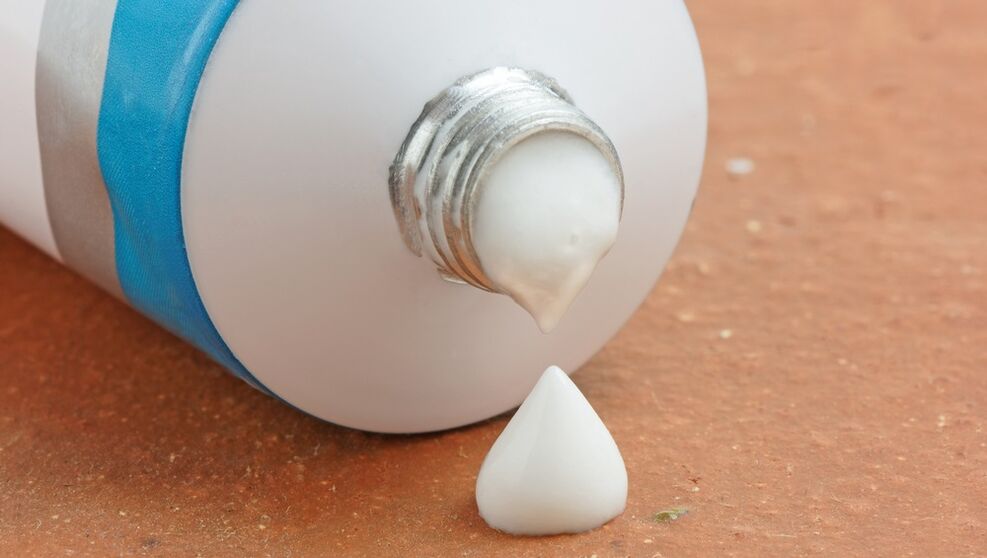Ointment from papillomas is a local drug that has antiviral and anti-inflammatory effects. Some ointments for benign neoplasms have an unfavorable side effect profile. The effectiveness of drug therapy depends on the correct choice of drug.

General information on pathology
Genital papillomas are benign neoplasms caused by viral diseases of various etiologies. Genital warts often do not hurt. In a third of the victims, they disappear after a few months.
Sometimes small papules can itch, bleed, and hurt during intercourse. Victims feel disadvantaged in their sex life. Many also consider their genital warts to be an aesthetic issue. They are ashamed and want to get rid of them as soon as possible.
There are many ways to treat skin lesions. The therapy depends on where in the body the genital warts are located. Another concern is whether there are other sexually transmitted diseases such as yeast infections, genital herpes, HIV or chlamydia.
If the vaginal mucosa grows or the urethra opens, treatment with trichloroacetic acid, for example, can kill the warts. However, with flat warts, the doctor usually resorts to surgical intervention.
No method guarantees that genital warts (condylomata acuminata) will disappear forever. Because the immune system does not always completely eliminate the human papillomavirus that causes genital warts, sexually transmitted diseases often recur.
A doctor can usually spot genital warts with the naked eye. He will examine the anus and genital area for skin changes and possibly take a tissue sample, which he then examines under the microscope. Genital warts inside the body, for example in the rectum, on the vaginal mucosa or in the urethra, are more difficult to detect. A special examination is often required – an examination of the vagina, rectum or urethra.
Once genital warts have been identified, the surgeon can either surgically remove the growths or freeze them with liquid nitrogen. Sometimes special creams and ointments are used. In rarer cases, when genital warts are growing on the tongue or around the eyes, an ear, nose and throat (ENT) or ophthalmologist can help.
The main characteristics of preparations for papillomas
Salicylic acid preparations, which reduce the mass of warts due to their keratolytic effect and sometimes even lead to healing with continued use, are among the most common anti-wart preparations. Salicylic acid destroys the intercellular cohesion of the horn cells and thus dissolves hyperkeratoses.
Large amounts of salicylates can be absorbed through the skin and cause poisoning. Therefore, extensive long-term treatment should be avoided during pregnancy, in infants and young children, and in renal failure. It also prevents contact with eyes and mucous membranes. Medications should not be applied to the genital area and face. This is because medications vary greatly in the concentration of salicylic acid
In order to interrupt cell division, cytostatics are used locally in the treatment of warts. By inhibiting DNA and RNA synthesis, cytostatics prevent cell proliferation and thus the spread of the virus.
Immunomodulators are approved for the treatment of external genital warts and perianal warts in adults.
Criteria for tool selection
Benign growths usually go away when the immune system is able to kill the viruses in the skin. However, if warts get in the way, consider the following treatment options:
- medicines;
- cryotherapy;
- surgical ablation.
To protect against infection with human papillomavirus, attention should be paid to hygiene measures - hand and foot disinfection, for example in swimming pools. Vaccines against papillomavirus types 6, 11, 16 and 18 have been available since 2006. In addition to cervical cancer, papillomaviruses also cause external genital warts and skin lesions on the vulva.
In order to reduce the risk of developing cervical cancer, the Standing Committee on Vaccination (STIKO) of the Robert Koch Institute recommends in the vaccination recommendation 2018 that girls be vaccinated before the first sexual intercourse (9-14 years). There is also scientific evidence that vaccinating pubescent boys, who are common carriers of the virus, can help stem the spread of cervical cancer.
There are other ointments (e. g. oxolinic acid) whose clinical effectiveness has not been proven.
Currently, salicylic ointment for papillomas is rarely used, since it has a significant number of side effects. Several topical therapies are available for the treatment of external genital warts (condylomata acuminata), the effectiveness of which is difficult to assess because the success rates of the studies on the individual methods vary widely. Not everything can prevent frequent relapses and cause significant local discomfort. There is no standard therapy.
Clinical studies comparing it with other treatment options are not available. Due to insufficient documentation, high spontaneous healing and significant side effects, the use of tea extract is not recommended.
Antipapilloma drugs with local action
Genital warts are caused by sexually transmissible human papilloma viruses, mostly types 6 and 11. On the one hand, they can heal spontaneously, on the other hand, they burden the patient and very rarely degenerate into malignant tumors.
It is not recommended to take and use funds without consulting a doctor. Which ointment is the best and most effective, the doctor will say.
Contraindications and side effects
In rarer cases, hypersensitivity reactions of the skin can also occur. In the case of hypersensitivity to 4-hydroxybenzoic acid methyl ester or 4-hydroxybenzoic acid propyl ester, the use of ointments should be completely avoided. It is strictly forbidden to use ointments during pregnancy or lactation.
Ointments can cause skin irritation, abrasions and irritation. This side effect is relatively common, but is nothing to worry about. Ointments are also used in 3-day cycles. After 3 days of use, there is a 4-day break during which the skin is restored.

























